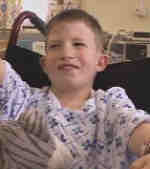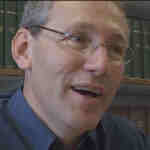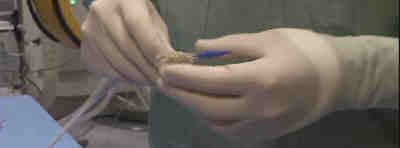Matthew Banks
Non Surgical Valve Replacement
Great Ormond Street is a hospital with an international reputation for groundbreaking treatments. At least a thousand children travel from abroad every year seeking treatment that they can't get back home.
Eleven year old New Yorker Matthew Banks is here to have a revolutionary heart procedure which is, currently, only available at Great Ormond Street Hospital. The treatment is urgent.
Thomas Banks, Matthew's father, explains "If we don't do something now, the heart would deteriorate to the point where the blood flow would back-up into the lung and he would go into heart failure. He would actually drown from the fluid in his lungs".

Matthew Banks
Matthew desperately needs a valve in his heart replaced, but he's too weak to undergo a major surgery. He's exhausted after the flight, but he's had to go straight to the hospital to have a series of tests before his procedure can be confirmed. He starts with a cardio stress test. An ECG machine will record the electrical impulses generated by his heart while he's exercising.
Matthew was born without a pulmonary valve, which controls the blood flow to the lungs. When he was a baby he had open-heart surgery to insert an artificial one, but these valves only last a maximum of ten years and now he desperately needs a replacement.
In order to have a scan, Matthew is injected with contrast dye. This will highlight the blood vessels in his heart to show doctors how well his circulation is functioning.
Back home, in America, the only way Matthew could have his valve replaced is by open-heart surgery. This traumatic operation involved cutting through the breast bone with an electrical saw to reach the heart. Something his doctors didn't think he was strong enough to survive. Now thanks to Dr Philipp Bonhoeffer, he has a life-saving alternative.

Prof. Bonhoeffer
Six years ago, Professor Bonhoeffer developed a collapsible heart valve that could be implanted without the need for open-heart surgery. Professor Bonhoeffer's groundbreaking technique involves mounting a valve inside a stent, a collapsible mesh cylinder commonly used to prop open damaged arteries. The stent and valve are collapsed and mounted on a catheter over a tiny deflated balloon. The whole thing is then guided into the heart via a vein in the leg.
If Matthew can have his valve replaced in this way, in the future he may only need one more open-heart operation in his life.
Matthew's parents, Thomas and Dawn, have never been to Europe before, but this is no holiday. They've remortgaged the house to pay for the trip. It's not just the financial costs, they've had to leave Matthew's older brother Kyle back in New York.
Thomas and Dawn Banks are about to meet Professor Bonhoeffer for the first time. He has decided that the test results can allow him to proceed with the operation. Matthew is about to become the 122nd person in the world to receive one of Dr Bonhoeffer's revolutionary heart valves. The procedure will take between one to two hours.
While Professor Bonhoeffer scrubs up, his team make an incision in Matthew's leg. They insert a guide wire into a vein and up into his heart. It's a relatively simple procedure, but it's not without risks.
The new valve makes it's journey along the guide wire into the heart. The team make sure the valve is in exactly the right position with the help of a surgical camera. Once in place, the balloon is inflated to stretch the valve to 16mm. An injection of contrast dye shows that Matthew's blood is now flowing correctly for the first time in two years.

Heart Valve is Loaded on the Catheter
They wonder if they can open the valve further. An extra 2mm could delay the need for future surgery by years. The valve replacement has taken just under an hour and is a complete success.
Twenty minutes after the procedure Matthew is starting to come round and Dawn can already see an improvement is him "He looks so nice and pink, even the dark circles have gone beneath his eyes". It's a huge relief for Matthew's parents, but he'll have to wait 24 hours before he gets a clean bill-of-health and is allowed to fly home.
The day after the procedure, Matthew is doing well. If he'd had conventional valve replacement surgery, he would have been in hospital for weeks and taken months to recover. By tomorrow morning he'll be fit enough to fly back home to New York.
CREDITS: All of this information came from the UK Channel 5 "Child in a Million" documentary series

